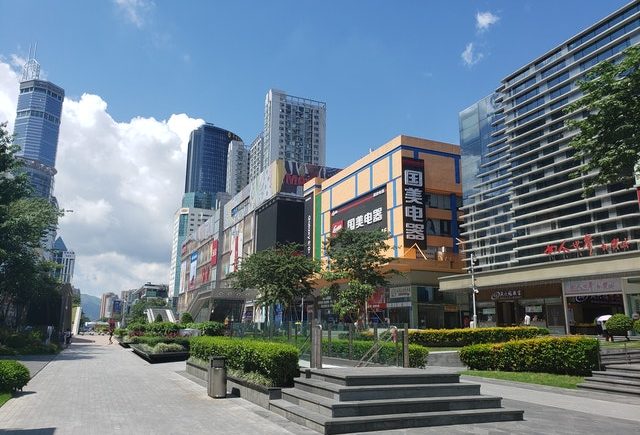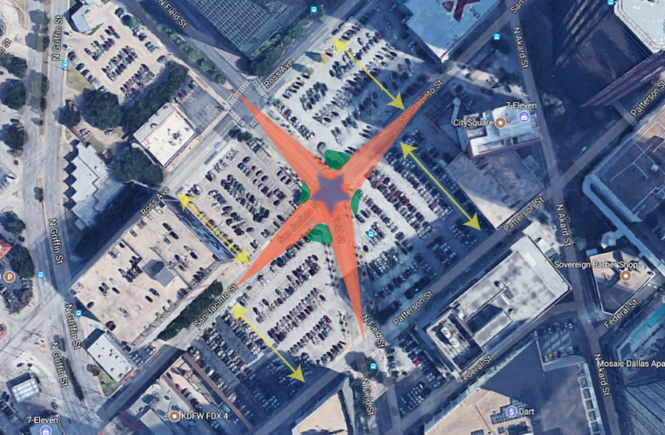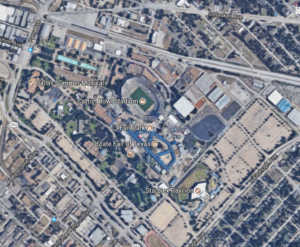
I recently spent a week in San Diego and toured their burgeoning bike network. While San Diego’s downtown is a gem within its own right, Balboa Park impressed me even more. Spatially integrated, urban and versatile, a person could spend an entire day there and never be bored. Its collection of interesting architecture and unique public plazas reminded me of Fair Park and showed me the possibilities for the space beyond the Texas State Fair. Balboa Park not only hosts tourists for its museums and cultural events, but it has become a central neighborhood park for cyclists, picnickers, runners and people who just want to sit under a tree and read. San Diego shows us how to redevelop Dallas’ Fair Park into a world class urban space that can also serve its local neighbors.
Neighborhoods Make The Park
Jane Jacobs wrote that it’s not the park itself but what surrounds the park that dictates its quality and use. She noted how the quality of Philadelphia’s public squares was mostly influenced by the state of their surrounding neighborhoods. Balboa Park is surrounded by Prado Terrace, Cambridge Square, North Park and a collection of other healthy neighborhoods hosting notable mid-century modern and Mediterranean Revival architecture. These neighborhoods give Balboa Park a healthy stream of visitors and eyes on the street.
Fair Park’s west side sees some momentum from Deep Ellum, but the neighborhoods on its east and south sides are struggling. Bringing up the neighborhoods surrounding Fair Park is key to its revival, but that’s often easier said than done. Fortunately these neighborhoods have an enormous asset to leverage to help them succeed – Fair Park itself. Thinking of the park and surrounding neighborhoods as separate entities does disservice to both planning components. A coordinated effort to improve the park and its neighborhoods at the same time will amplify both investments until their momentum becomes self-sustaining.
A Park is Defined by its Edges
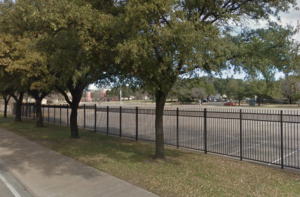
Balboa Park meets its surrounding neighborhoods face to face. One can live a block away from the park, walk across the street and be in one of its grassy hills in less than 5 minutes. The park is open, permeable and its edges constitute a public front lawn for surrounding communities.
Fair Park’s surface parking creates border vacuums around its perimeter, cutting it off from its surrounding neighborhoods. The formal entrance gates, even when open, give the impression that the space is private. Opening up Fair Park’s edges on Fitzhugh Ave. and Robert B Cullum Blvd is imperative to creating a more inviting park. The first step is removing the fencing around these parking lots and creating safer, more inviting pedestrian connections across these boulevards. The second step in addressing the park’s edges is more complicated.
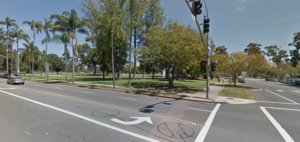
The massive amount of surface parking around Fair Park is a challenge and an opportunity. How this land is used will help define the park’s edges and the park itself. I’ve heard planners say the space should be used for high-density housing. I’ve heard others say it should be used for public recreational space. I believe the answer is both. On the Fitzhugh side especially, there’s enough acreage to build the eastern side of the parking lots with housing, build the remaining parcels as public open space and outdoor recreation and create a new local street between the two land uses. This new local street will be a strong park edge with restaurants, apartments and retail on one side, and an active public space on the other. On the Robert B. Cullum Blvd side of the park, the parking lots could be entirely recreational space. Once Fair Park gains momentum, the low density, auto-centric commercial land uses on the other side of the boulevard will eventually be redeveloped into better things (see Klyde Warren Park).

A Park Does Many Things
Project for Public Spaces says a park should do at least 10 things. Balboa Park does like 30. Its interior has a collection of museums, public spaces, restaurants, scenic views and bike trails. Its perimeter has hiking and biking trails, shady hills, bocce ball courts and lots of passive green space.
As of now, Fair Park only does a few things well, but that could easily change. Many of Fair Park’s Art Deco buildings are underutilized and could host an array of smaller museums, non-profits, tech start ups, retail and restaurants. New green space could bring neighborhood residents and tourists into the area while providing physical activity opportunities for low income neighborhoods. New bike and walking paths around the park’s perimeter can create high-visibility recreational opportunities as well. Once Fair Park’s surface parking is redeveloped as housing and park space, this new area should be as versatile as possible to create a utilitarian “front door” to the park. Want to play frisbee? Basketball? Just sit and read? All of these things should be possible at the front steps of Fair Park.
Bring the Streets Back to the People

San Diego recently built some NYC-style public spaces on Balboa Park’s interior streets. Epoxy, portable chairs, tables and lane narrowing has opened up opportunities for more public space on what used to be very wide park roads. This type of treatment would be perfect for Fair Park given its primary use for the State Fair which requires wide streets. Narrowing Grand Ave. and the Midway using paint/epoxy once year-round foot traffic picks up will create a more welcoming environment for pedestrians and outdoor cafe space opportunities. The roundabout between these two streets could be an excellent public plaza with cafes and restaurants fronting it. These plazas could easily be removed for a few weeks to accommodate the Texas State Fair since curbs will not be relocated.
Bring Fair Park Back to the City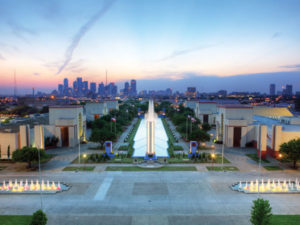
Fair Park has just as many architectural gems as Balboa Park. The only difference is how the spaces between the buildings are leveraged to create value for the park and the city as a whole. As it stands now, Fair Park is a great venue for the State Fair, but it could also be an enormous year-round asset for the entire city. A combination of quality urban design, versatile recreational space and surrounding neighborhood redevelopment could remake the space into a major community asset and year-round tourist destination.


